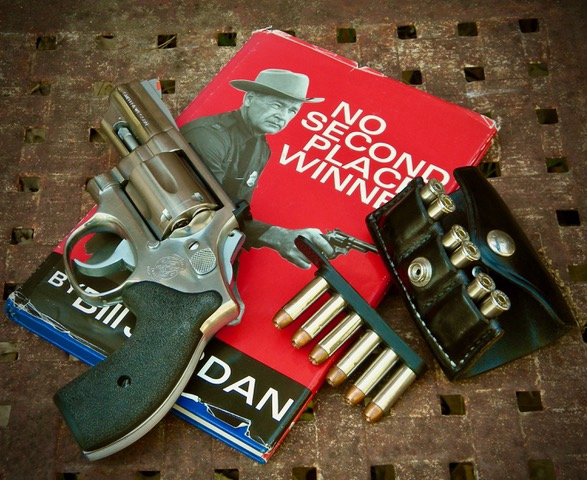
In the course of defensive training and practice everyone is always worried about “speed.” They push to draw fast, move quick and hammer rapid fire hits on target. “Am I fast enough,” they ask? The ability to draw, move and shoot or perform any other defensive skill “fast” is admirable, but it’s not the ultimate goal. “Speed,” is found in making decisions. Mental efficiency, choosing to respond to violence in a timely fashion is what wins fights.
During a recent advanced handgun class I had students run the Federal Air Marshall qualification course of fire. The first time through they didn’t know what the par times were. Everyone scored high on marksmanship, and their times weren’t that bad. On the next run they were told par for each course of fire. Everyone starts pushing the speed – drawing, shooting and reloading fast in an attempt to meet the time requirements. Their accuracy suffered greatly, and their actions were no longer efficient. All because they thought they had to go “fast.”
Time is an important consideration, but not in the way most people think. Regardless of what you’re doing, there’s a limit on how fast you can perform. Go too fast and things fall apart, mistakes occur – which consume more time. Overall efficiency drops. Yes, it’s important to know how long it takes to draw – from concealment – and fire accurate shots. Now, factor this into your threat response.
The key is identifying possible trouble before it become dangerous. If the first clue you have to trouble is someone hitting/cutting/shooting you it’s going to be hard to assemble a good response. You can still win, but it’s will be difficult.
Staying aware of the environment – both terrain and the people – provides cues that trouble is coming soon. Making the decision to escape, get to cover or move and draw prior to actual violence buys time needed to actually do these things. And, there’s time to act efficiently, without mentally and physically being pressured and rushed. Plus, your reaction must force the threat into a reactive mode, which creates more time. Finally, always have your next action ready, continuing to pressure the threat(s).
When faced with danger people often freeze. “I can’t believe this is happening,” they think. Or, they freeze, second guessing their initial decision, not trusting their training - “Move!” Sometimes it’s a matter of having too much time prior to the physical action – attempting to guess what’s going to happen, or thinking about the outcome as opposed to the actions needed to obtain that outcome – Victory!
All defensive skills must be practiced until you can execute them efficiently, under stress and on demand. Make sure your training/practice involves decision making, like having to identify the source and nature of the danger. Responses are then based on the situation. Then, take your time to ensure these actions are correct – not fast. It’s not about the speed you perform; it is about how quick you make the decision to act.
Tiger McKee is director of Shootrite Firearms Academy, located in northern Alabama. He is the author of The Book of Two Guns, AR-15 Skills and Drills, featured on GunTalk’s DVD, “Fighting With The 1911 and has regular columns in Gun Digest and American Handgunner.
http://www.facebook.com/pages/Shootrite-Firearms-Academy/156608611038230?ref=ts